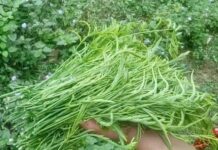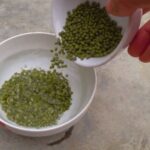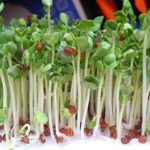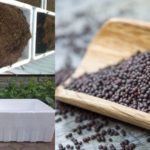– Mung beans: 2 handfuls
– Warm water
– Absorbent towels: 2 pieces
– Mesh bag: 1 piece
– Square basket or large pot
How to Choose the Best Mung Beans for Delicious Sprouts:
– Opt for small, firm, and nutty organic mung beans grown without stimulants. These beans will yield tasty sprouts.
– On average, 1-1.5kg of beans will produce 10-13kg of sprouts. However, it’s best to sprout only about 100g of beans at a time for fresh, frequent batches.
– If you let the sprouts go past their prime, the stems turn purple, and roots and shoots appear; they will taste bitter. To salvage them, continue growing them into microgreens and cut off the roots to reduce bitterness.
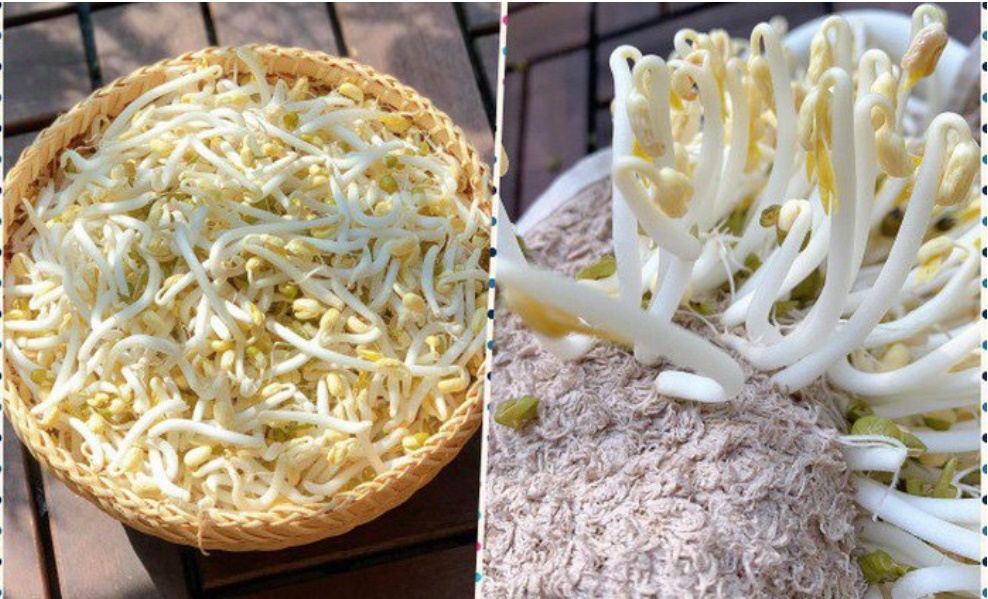
Soaking the Mung Beans:
– Place the mung beans in a bowl of warm water (35-40°C) and soak for 7-8 hours. By the end of this period, the beans should appear slightly cracked.
Lining the Basket or Pot with a Damp Towel:
– Take a thick, absorbent towel and soak it in water. Wring it out until damp and line the bottom of your basket, pot, or container. Then, place a layer of mesh fabric on top for easy sprout removal later.
Adding the Sprouting Beans to the Surface of the Mesh:
– Spread the soaked beans onto the mesh surface, ensuring the beans don’t overlap for even and attractive sprout growth. Cover with a thin, damp towel.
– It’s important to soak the beans for the full duration and then discard the soaking water, rinsing the beans thoroughly afterward. This prevents the growth of bitter sprouts caused by residual soaking water.
Using a Black Plastic Bag to Cover the Sprouts and Placing Them in a Dark Location:
– Place the basket or pot with the damp towel and mesh fabric inside a black plastic bag. Find something heavy, weighing about 5-6kg, to place on top, such as a milk carton, ceramic dish, or large plate. Don’t worry; the sprouts will still grow. This step helps produce plump sprouts with shorter roots.
– Leave the container in a dark place, and there’s no need to water the sprouts. You can check on them after just two days.
Harvesting:
– Your sprouts will be ready for harvest in about three days. Simply lift the mesh fabric, and you’ll have a neat, quick harvest with fewer roots thanks to the towel lining.
– This method yields straight, white, and plump sprouts with a sweet and crispy taste.
*According to Khoevadep*
The Ultimate Guide to Growing Sweet Mustard Greens in Containers
Growing Chinese cabbage is a breeze, even for those with a less-than-green thumb. With its easy-going nature, this vegetable is the perfect choice for a home garden. So, get ready to roll up your sleeves and dive into our step-by-step guide on how to grow Chinese cabbage in a foam box. It’s time to embrace your inner gardener and enjoy the fruits of your labor, or should we say, the veggies!
















